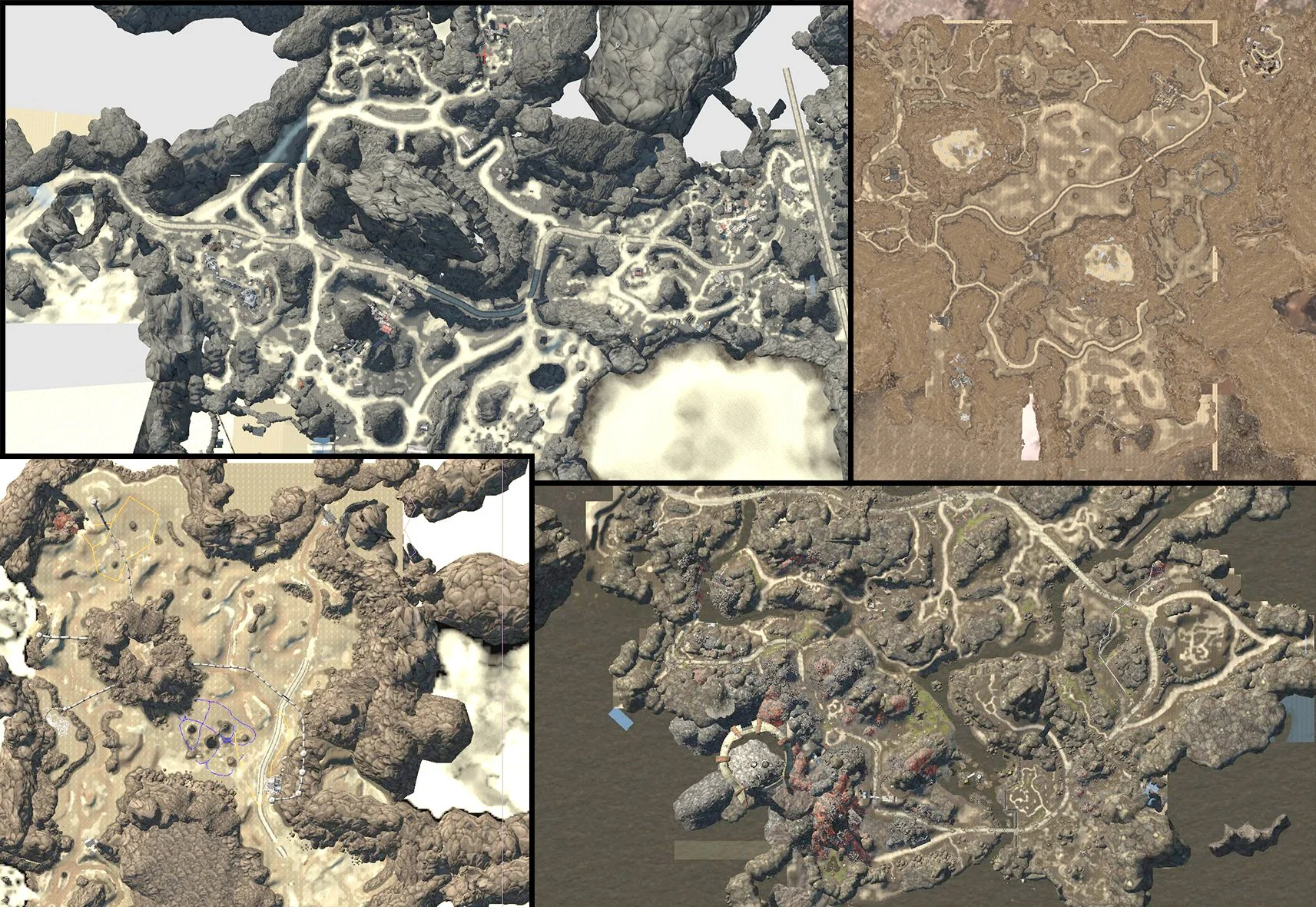BORDERLANDS
Gearbox Software - 2009
Genre - Multiplayer First Person Shooter
Role - Game Designer
Responsibilities - Gameplay, Level Design, UI/UX

“An irreverant romp across a desolate alien world ”
Borderlands was a wild adventure, blending first person shooter action with the depth and loot of an RPG.
Six MONTHS
I joined the Borderlands team during the final six months of development. At the time the core loop of the experience was working great, but there was huge amount of work remaining to do across many game systems.
I was charged with tackling several major areas of the experience, including, players skills, user interface, level design, and polishing the critical first thirty minutes of the game in Fyrestone.
It was a hectic time, but it was also really satisfying to help the team clean up some rough edges, and get the game shipped.
First THirty
From playtesting it was clear, if we could get players through the first thirty minutes or so, they were hooked. Initially, the first section of the game was a bit overwhelming with a lot of RPG concepts to teach a traditionally FPS audience. I worked with other designers to restructure Fyrestone, improving the layout, and expanding the initial mission with a step by step introduction to the games core concepts.
It’s hard to imagine today, but at the time, treasure chests were in extremely limited supply, with only a hand-full per zone. Inspired by my experiences playing traditional RPGs I conceived of the idea to add many more small lootables to the world. As well I expanded the level of detail across Fyrestone, adding a significant number of nooks and crannies to explore. The level design team ran with this idea and peppered the entire world with loot!
I noticed some playtesters were exploring the starting area immediately after being dropped off, instead of following claptrap. I wanted to reward these inquisitive players, so I hollowed out the motel, and added several visual story telling moments to discover, and packed them with lootables.
Players who explored further could solve a simple jumping puzzle and discover a decent weapon to start the game with. It wasn't much but it was key to helping players feel like it was worth the effort to look around.
An example of one of the many lootables added across pandora.
One challenge players ran into was finding fast travel locations, shops, and new-u stations. I printed out dry erase top down maps of each of the main zones and worked with the level design team to tweak the number and locations of these key services, making them easier to access.
Early versions of Fyrestone weren't quite as cohesive as this final shot above. I spent a fair bit of time painting terrain, and adjusting rocks to make the space easier to navigate and more visually appealing.
This little racecar was just one of many the easter eggs I hid throughout Pandora. These oddball touches added a lot of charm to the final game, and made it fun for developers as well!
USER INTERFACE
Another area of of the game that needed some attention was the User Interface (UI&UX). While the exisiting interface was functional, each screen had a different layout than then last, often leading users to become disoriented.
I did an art and organization pass on all major areas of the UI including the HUD. My goal was to create more consistency throughout. Given the short time remaining I had to pick my battles carefully since even small changes could create ripples of work downstream for the UI team.
PLayer SKILLS
One of the biggest tasks I took on for Borderlands was to update the player skill tree. Many skills at the time consisted of simple stat gains that didn’t feel meaningful to players. I collaborated heavily with the systems designers, UI team, and engineers to add more life to the skills and their trees.
The first innovation was adding the different colored “branches” to the layout. Each color denoting a different sub-tree in the design. This helped players simplify their build choices. For example investing heavily in combat, with only a few points in support. In this prototype version of the skill tree there were still 3 “instigator” nodes above the action skill, but these were eventually removed.
Probably the biggest changes I made to skills were to add more interesting behaviors and visual feedback to more than fifty percent of the skills. Due to the limited timeframe we had to stick to features that were already in the game. A good example of these changes is Bricks “Prize Fighter” skill, where punching bad guys would randomly cause money to pop out. For skills that already had useful behaviors such as Rolands regeneration auras on his turret, I created colored visual effect meshes to more clearly show off the the radius and effect. This resulted in a spinning red and blue bubble around the turret that the team had dubbed the “Party Police”















